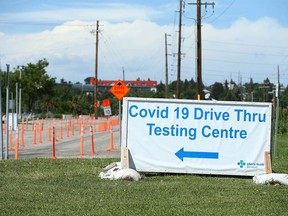Omicron subvariant strains account for about 85 percent of all cases, according to COVID-19 sewage tracers

.
COVID-19 sewage tracers say the highly contagious BA.4 and BA.5 subvariants are becoming the dominant strain in Calgary and could cause a future spike in infections.
Announcement 2
.
Casey Hubert, an associate professor in the University of Calgary’s School of Science, said Omicron subvariant strains account for about 85 percent of all cases, based on his follow-up. A month ago, BA.4 and BA.5 accounted for about 15 percent of infections, while BA.2, a subvariant that led to a spike in cases earlier this year, accounted for 85 percent.
“The big spike around March was a BA.2 spike; the big spike around New Years was a BA.1 spike. It would be great if we didn’t get a spike from BA.5, but we know that BA.5 has displaced BA.2,” said Hubert. “We are watching closely to see what happens next.”
The latest sewage monitoring from the University of Calgary shows that cases have remained steady over the past few weeks, with a high data point on July 4 that hasn’t been replicated since. Hubert said cases don’t appear to be rising or falling at a rapid rate right now. However, he said it’s not too early to prepare for an impending wave of COVID-19.
Announcement 3
.
The latter subvariants have been found to be highly infectious, but do not appear to be more severe than the earlier strains.
“It is not clear to me why we would not save ourselves (from a spike). Our policies are probably similar to other places,” said Hubert.

The BA.4 and BA.5 subvariants are currently driving surges in infections in Ontario and Quebec, and Ontario announced this week that it would expand booster shots of the fourth dose of COVID-19 vaccines. In that province, anyone over the age of 18 who received their first booster shot at least five months ago will now be eligible.
Albertans are currently eligible to receive a fourth dose of the vaccine if they are 70 years of age or older; First Nations, Metis or Inuit and over 65 years of age; or living in congregate care settings. Those over the age of 12 who require additional doses to comply with international travel rules are also eligible. Immunocompromised Albertans age 12 and older are also eligible.
Announcement 4
.
Lisa Glover, a spokeswoman for Alberta Health, said the province is reviewing the latest guidance on the deployment of fourth doses of COVID-19 vaccines and an update will be provided in the near future. She said Albertans can expect to see increased transmission of COVID-19, as well as other respiratory illnesses, in the fall and it’s important for people to consider their individual risk factor.
“This may mean wearing a mask at times when transmission is highest or when meeting with loved ones who are at higher risk of serious outcomes,” Glover said.
Glover said Albertans are encouraged to get all doses of vaccine for which they are eligible.
The latest numbers from Alberta Health posted online show that there were 1,361 confirmed cases of COVID-19 in Alberta recorded between July 5 and July 11. In that period, hospitalizations fell to 552, down from 568. The number of COVID-19 patients in intensive care fell to 16, down from 21.
Wastewater monitoring from the University of Calgary can be found at covid-tracker.chi-csm.ca.

